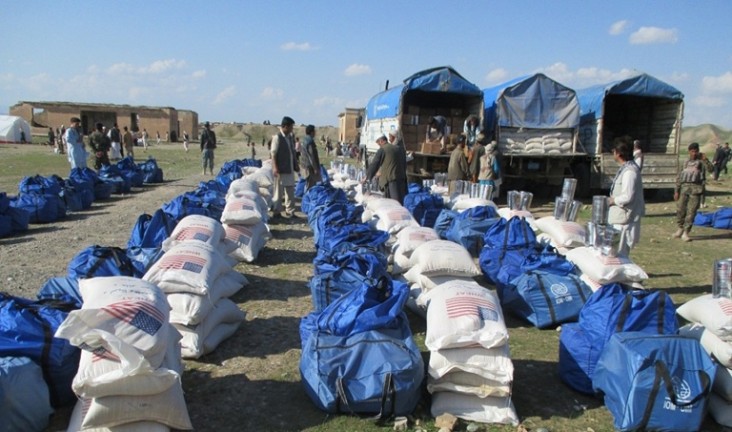
Protracted conflict, high levels of insecurity, inhospitable terrain, severe climate and weak infrastructure have plagued Afghanistan for the past 30 years. Afghanistan’s humanitarian landscape is further complicated by several other factors: a majority of the population lives in hard-to-reach rural areas, over 700,000 Afghans are internally displaced by conflict, over 200,000 people are exposed to natural disasters each year, and more than 2.2 million people are severely food insecure.
OUR WORK
USAID is leading USG humanitarian assistance efforts in Afghanistan by:
- Supporting targeted responses to meet humanitarian and food assistance needs of conflict and disaster affected populations;
- Building resilience by supporting community-based mechanisms that incorporate disaster risk reduction and emergency preparedness; and
- Supporting coherent and coordinated national disaster preparedness and humanitarian response systems.
In response to this complex and ongoing emergency situation, USAID’s Offices of Foreign Disaster Assistance and Food For Peace are: 1) supporting targeted responses to meet humanitarian and food assistance needs of conflict and disaster-affected populations; 2) building resilience by supporting community-based mechanisms that incorporate disaster risk reduction and emergency preparedness; and 3) supporting coherent and coordinated national disaster preparedness and humanitarian response systems. These programs provide food assistance and emergency relief items – such as clothing, kitchen utensils, hygiene kits, and blankets – to conflict-affected and disaster-affected people. Assistance is particularly focused on internally displaced persons and other vulnerable groups, including malnourished children and pregnant and lactating women. USAID also aims to improve humanitarian response efforts by supporting rapid response capacity for acute needs following natural disasters and conflict; improving humanitarian indicators; and enhancing humanitarian coordination, data collection, and analysis.
NATURAL DISASTER PREPAREDNESS AND RESPONSE
USAID works closely with the Afghanistan National Disaster Management Authority (ANDMA) and other relief actors to monitor, assess, and respond to natural disasters in Afghanistan, including stockpiling non-food emergency relief supplies for immediate distribution. Work is also being done at the community level to conduct hazard mapping, contingency planning, capacity-building for first responders, small-scale flood control, and land and resource management to improve a community’s ability to cope with disaster. In the first half of 2014, USAID assisted approximately 85,500 disaster-affected Afghans by providing shelter kits, blankets, and other emergency relief commodities. In addition, support is given to NGOs to provide shelter and water, sanitation, and hygiene (WASH) assistance, including improved sanitation facilities, access to clean drinking water, and hygiene awareness training, to families affected by natural disasters.
FOOD SECURITY AND EMERGENCY FOOD ASSISTANCE
USAID is helping fight hunger and strengthen food security by providing emergency food assistance to Afghanistan’s most vulnerable populations, including pregnant women, malnourished children under five years old, orphans, the indigent, and the elderly. In FY 2014, the agency provided 42,270 metric tons (MT) of in-kind food assistance to the World Food Programme’s emergency food and nutrition assistance efforts, which reach nearly 2.4 million people.
HEALTH AND NUTRITION
In FY 2014, USAID provided 830 MT of ready-to-use foods designed to treat severe acute malnutrition (SAM) to the U.N. Children’s Fund (UNICEF) and treated approximately 60,000 children with SAM. Partnerships with the Afghanistan Ministry of Public Health and NGOs are also expanding access to SAM treatment. In addition, USAID supports the World Health Organization to provide critical health care services, including establishing temporary health facilities, providing medicine and medical supplies, and supporting provinces at high risk of health emergencies to develop and implement mass casualty management plans. Support is also provided to UNICEF to increase access to WASH services in all 34 Afghan provinces, specifically targeting children, as poor hygiene, lack of sanitation, and inadequate access to safe drinking water directly contribute to infant mortality and morbidity, as well as under-nutrition.







Comment
Make a general inquiry or suggest an improvement.